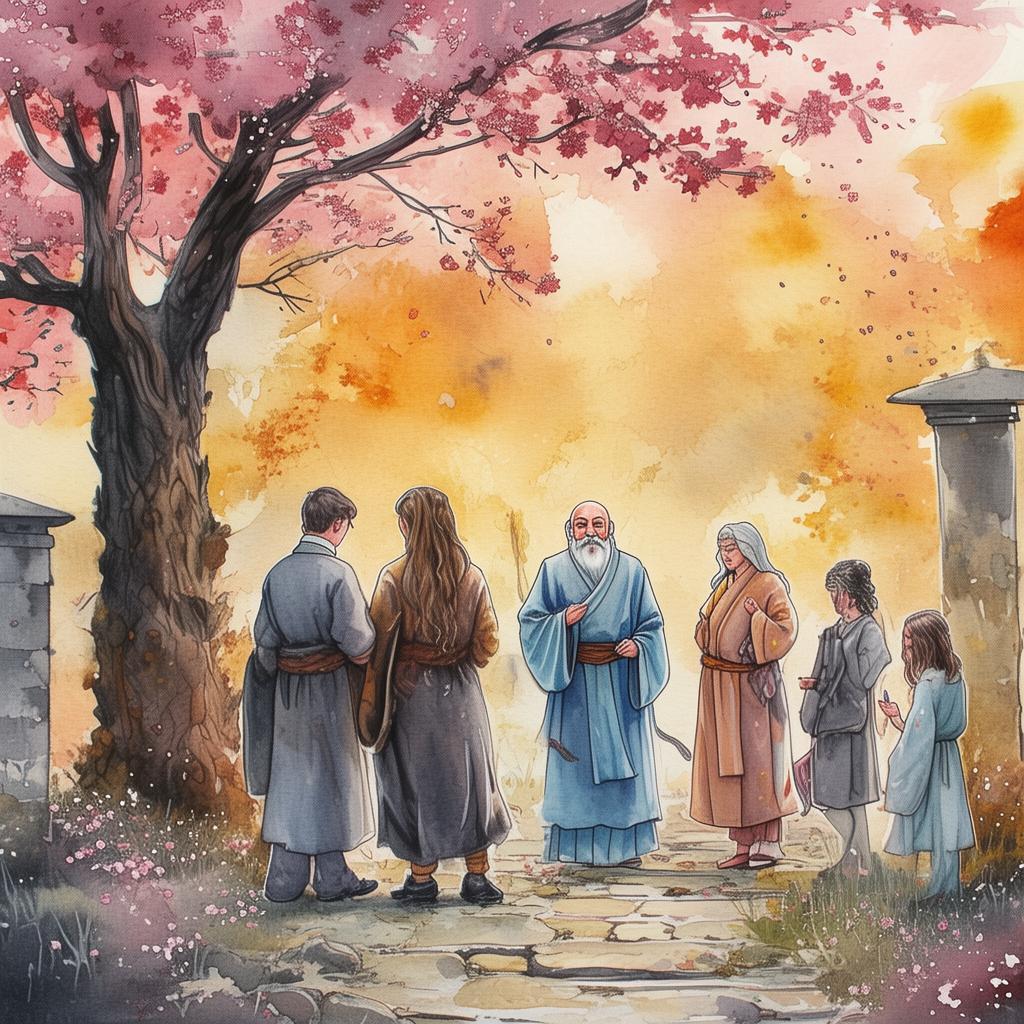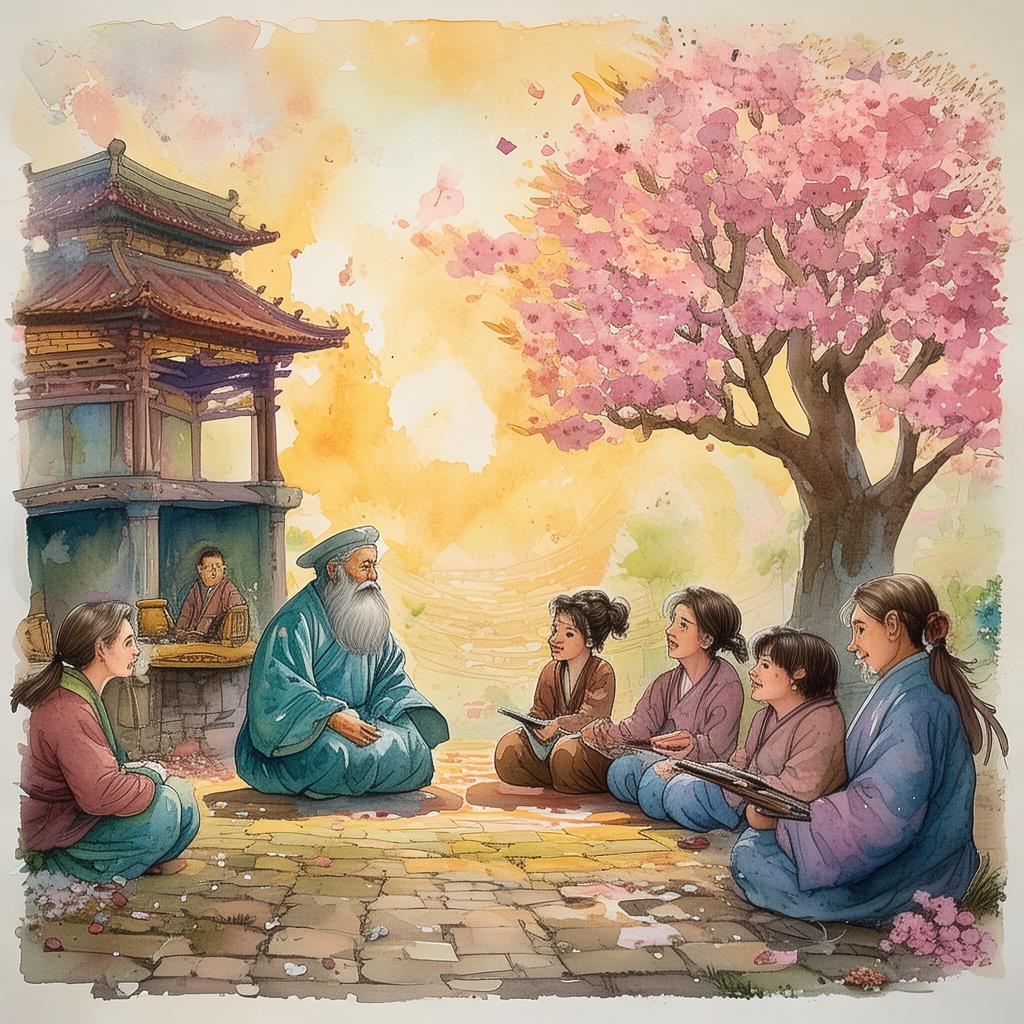Parallel Realms of Pinyin Mastery: The Yin and Yang of Sound
In the bustling metropolis of Beijing, where the ancient meets the modern, there lived a Pinyin master named Ming. Ming was not just a master of the Chinese phonetic system but also a connoisseur of the language's rhythm and sound. His ability to manipulate Pinyin was so profound that it was said he could weave words into spells that held the power to shape reality.
One fateful evening, as Ming was practicing his art in a dimly lit room filled with books on linguistics and philosophy, he heard a soft, resonant tone that seemed to come from nowhere. The sound was like the whisper of the wind through bamboo, carrying with it an otherworldly quality that was both soothing and unsettling. Intrigued, Ming followed the sound until he found himself at the edge of a hidden door in his room.
With a deep breath, he pushed the door open, and before him lay two worlds. The first was a world where the Chinese characters were replaced by their Pinyin counterparts, a realm where the language flowed with a rhythm that was both familiar and alien. The second was a world where the characters remained, but the Pinyin pronunciation was different, as if each character were a note in a symphony of the spoken word.
Ming realized that he had stumbled upon a parallel universe, one where the rules of language were as mutable as the very air he breathed. He was struck by the thought that his mastery of Pinyin could be the key to bridging the gap between the two worlds. With this revelation, he decided to venture into the Pinyin realm, eager to explore its mysteries and test the limits of his abilities.
In the Pinyin world, the sounds were rich and full, each character a unique melody that could change the very essence of the language. Ming quickly learned that the sounds were not just representations of the spoken word but were alive with energy and meaning. He discovered that by combining certain sounds, he could create spells that had the power to influence the world around him.

One such spell allowed him to communicate with the inhabitants of the Pinyin realm, beings who spoke in a language that was both musical and poetic. Ming taught them the ancient Chinese language, and in return, they showed him the art of sound manipulation. Together, they created a harmonious blend of the two languages, a fusion that seemed to resonate with the very fabric of existence.
However, the peace was short-lived. A dark force began to stir in the Pinyin realm, a force that sought to disrupt the balance between the two worlds. The force was driven by a desire to control the sounds of the Pinyin realm, to turn them into a weapon that could silence all other languages. Ming, with the help of his new friends, knew that he had to stop this darkness before it spread into the world of characters.
The battle was fierce, fought with spells and incantations that seemed to twist the very air around them. Ming used his knowledge of Pinyin to create a barrier of sound that protected both realms. But the darkness was relentless, and it seemed as though it would eventually overwhelm the barrier.
In a desperate bid to save the Pinyin realm, Ming decided to venture into the heart of the darkness. He found himself in a cavern filled with echoes of the Pinyin realm, each sound a reminder of the beauty and power of language. In the center of the cavern stood a figure made of pure sound, its form shifting and changing with every note it produced.
Ming confronted the figure, using his own Pinyin spells to counter the darkness. The battle raged on, with Ming and the figure of sound trading blows that shook the very ground beneath them. Finally, Ming realized that the true power of his Pinyin mastery lay not in the spells he could cast, but in the understanding of the language itself.
He began to speak, not in spells, but in words, in sentences, in stories. His voice was pure and clear, filled with the essence of his being. The figure of sound, now weakened by the constant battle, listened intently. Ming's words reached the core of the darkness, and for a moment, there was silence.
The darkness began to retreat, and the barrier of sound began to strengthen. Ming knew that the darkness would not be defeated by force alone; it had to be confronted with the light of understanding. He continued to speak, sharing stories of love, of loss, of the beauty of life itself. The words resonated with the figure of sound, and with each word, the darkness grew weaker.
Finally, as Ming's last word echoed through the cavern, the darkness shattered, leaving behind a sense of peace and harmony. The figure of sound transformed into a being of light, and Ming realized that he had not only saved the Pinyin realm but had also restored balance to both worlds.
As he returned to his own realm, Ming knew that his journey was far from over. He had discovered that the power of Pinyin was not just a tool for manipulation but a bridge between worlds, a way to connect with the essence of language itself. From that day on, Ming dedicated himself to mastering the sound of Pinyin, not just as a linguist but as a guardian of the balance between the Yin and Yang of sound and reality.
✨ Original Statement ✨
All articles published on this website (including but not limited to text, images, videos, and other content) are original or authorized for reposting and are protected by relevant laws. Without the explicit written permission of this website, no individual or organization may copy, modify, repost, or use the content for commercial purposes.
If you need to quote or cooperate, please contact this site for authorization. We reserve the right to pursue legal responsibility for any unauthorized use.
Hereby declared.









